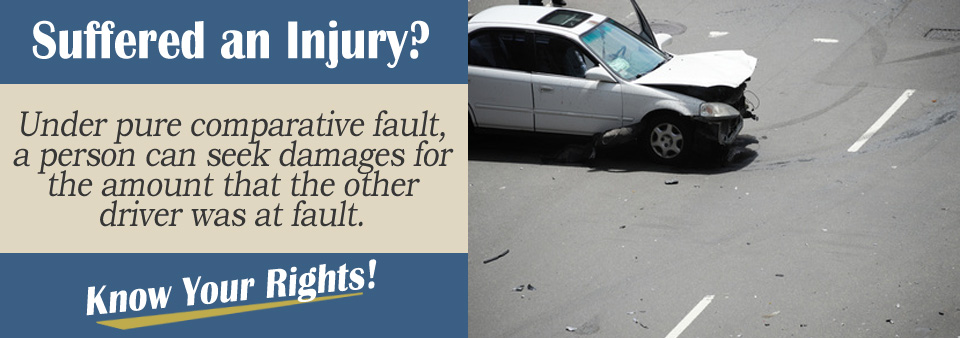Fault is a highly contested issue when it comes to personal injury cases. Unless you reside in one of the dozen states where “no-fault” insurance is the legal standard, you will need to prove some level of fault when it comes to a personal injury claim.
However, once a party is determined to be “at fault,” the other side is able to raise defenses to the claim to show that he or she was not solely at fault for the accident caused.
These defenses include contributory negligence and comparative fault. Pure comparative fault is one of those defenses. What does it entail, and how would it affect your case?
We have asked attorney Alaina Sullivan about this type of defense. Here's her explanation of the concept:
Apportioning Fault
Fault is hardly ever black and white. Both parties almost always play some part in an accident occurring. One party may play a significantly larger portion of the cause, but the concepts of contributory negligence and comparative fault arose in response to defendants arguing it was unjust to be held completely responsible for an accident when the injured party also played a role in causing the accident.
Two different levels of fault apportionment are used: contributory fault and comparative fault. Contributory fault goes on the idea that if another party played any part in the accident, he or she is completely barred from seeking relief.
Comparative fault, however, is a less restrictive way of viewing blame, which we will explore below.

Comparative Fault
Comparative fault deals with a system of dividing up liability or responsibility for a personal injury or accident. The term comparative fault refers to divided up damages between parties based upon the percentage of “fault” or negligence they towards causing the accident.
The injured party is then compensated for his or her injuries but this amount is reduced by the percentage he or she was found to be negligent.
Pure Comparative Fault
Pure comparative fault is somewhat the opposite to what is called pure contributory negligence. Under pure contributory negligence, if the injured party is found to be responsible by any small percentage, even just one percent, that party is barred from seeking compensation for injuries.
On the flip side of the spectrum, under pure comparative fault, the injured party or plaintiff’s negligence, even if it is significant, will not bar him or her from seeking damages. Technically, under pure comparative fault, even if the plaintiff is 99 percent at fault, the plaintiff can still seek one percent damages.
It takes the harsh system of pure contributory negligence and goes in the complete opposite direction.
Currently, 13 states, including Alaska, Arizona, California, Florida, Kentucky, Louisiana, Mississippi, Missouri, New Mexico, New York, Rhode Island, South Dakota, and Washington have pure comparative fault rules.
Options for Defendants
All is not lost for the other side when it comes to pure comparative negligence. While a plaintiff who sues the other driver can receive compensation for his or her injuries, the other party can do the same. In pure comparative negligence, even if the plaintiff who is pursuing the case, was more at fault than the defendant, he or she can receive compensation for damages.
However, that means that the defendant can pursue his or her own case or counter-sue. If the court already found that plaintiff held some part in liability for a car accident, it would only make sense to assume that means the court would find the exact same conclusion if the defendant in the first case were seeking compensation in his or her own case.
It is for this reason that the pure comparative negligence states find a lot of counter-suits in personal injury actions. This manner of viewing fault leaves the door open for more litigation than in other states following the modified comparative negligence model.
In fact, many states enacted these modified comparative negligence laws to avoid this very problem.
Contact an Attorney Today
If you have been involved in a car accident in a jurisdiction where pure comparative fault is the legal standard and have questions about your rights, it is always recommended you contact an attorney today to discuss your case if you do not currently have a lawyer or have any questions.
A licensed personal injury attorney will be able to evaluate your case and determine if you have a claim against the other party’s insurance company.
To receive the compensation for your medical bills, property damages, and pain and suffering, you should speak with a personal injury attorney in your area today.